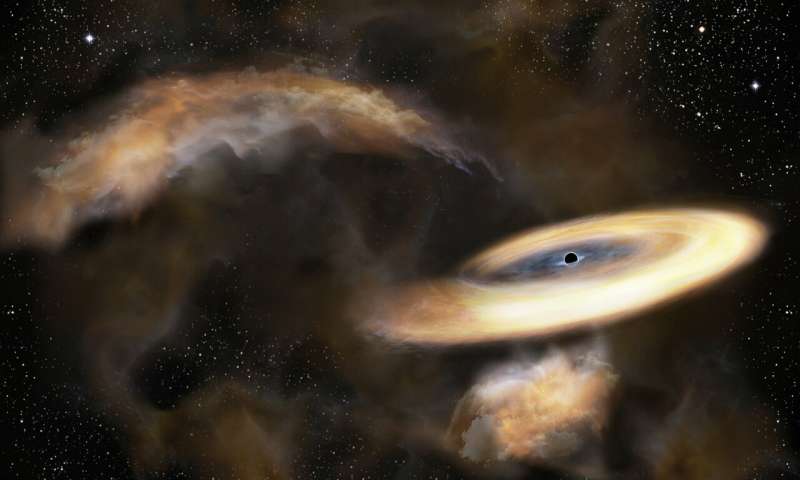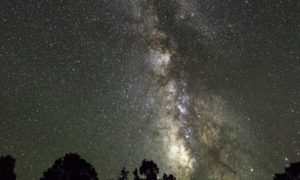Black holes are the most powerful body to be existing in the Universe. These cosmic bodies are generally difficult to spot. It was predicted by Einstein in 1916 for the very first time and almost after 100 Years for a telescope to spot the picture of a black hole. These beasts are undiscoverable due to their power of swallowing light. The astronomers used different forms of radiation, especially X-rays to study the black holes and they have been able to find hundreds of them in the space. At present, Ohio State University’s new detection method is being used to identify a population of black holes.
The Earth-based telescopes and Gaia satellite observations have provided data that showed the existence of a black hole surrounding a mammoth star named 2MASS J05215658+4359220. The astronomers found J05215658 to be surrounded by a massive invisible body and they assume it to be a new class of black holes. Usually, a binary system is found to have a black hole orbiting a star and it is easy to spot as the black hole’s gravity pulls almost all the materials from the star in and illuminates the black hole using radiations. In case of J05215658, the interaction between the star and the black holes is less, which makes its detection impossible. The new black hole is 3.3 times the mass of the Sun, which gives it the tag of the lowest mass black hole. The stars usually fall into the black holes or become a neutron star when they die. Thus, the researchers need to understand the black hole and the stars clearly to get a viewpoint surrounding the mysteries of black hole formation and evolution.
Similarly, the researchers at the University of Southampton and the Inter-University Centre for Astronomy & Astrophysics recently spotted a black hole named MAXI J1820+070 to be flickering in the Milky Way galaxy. The black hole was found in 2018 and this low mass black hole was found to be emitting a whole bunch of X-ray and visible light radiation. The eating up of the binary companions is assumed to be the reason behind the flickering.
Linda holds a total of 6 Years of experience in the content writing field. This intense experience has offered her the proficiency to present complex scientific phenomena from the science sector in a very simple and convincing way. This is one of the special skills that make her the most followed writer on our news platform globally. Linda has her own style of writing and gives a special touch to each news report she writes. Besides being the most experienced person in the healthnewsreports24.com Science team, she holds deep knowledge of this sector that makes her suitable for spearheading the Science Department.








Be First to Comment